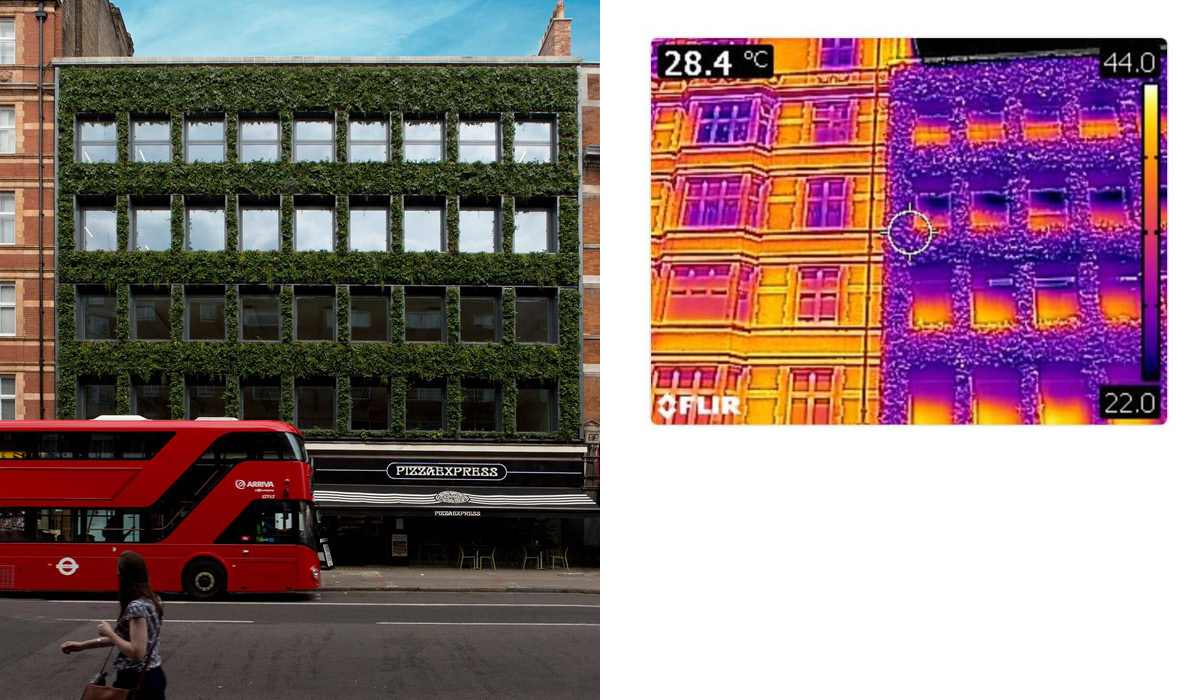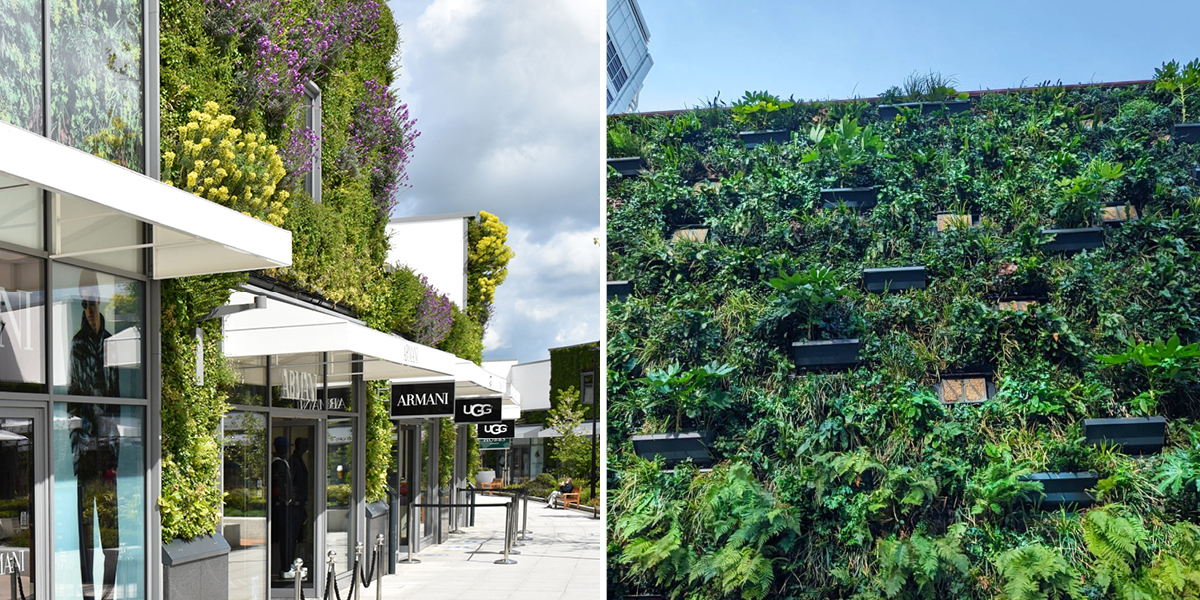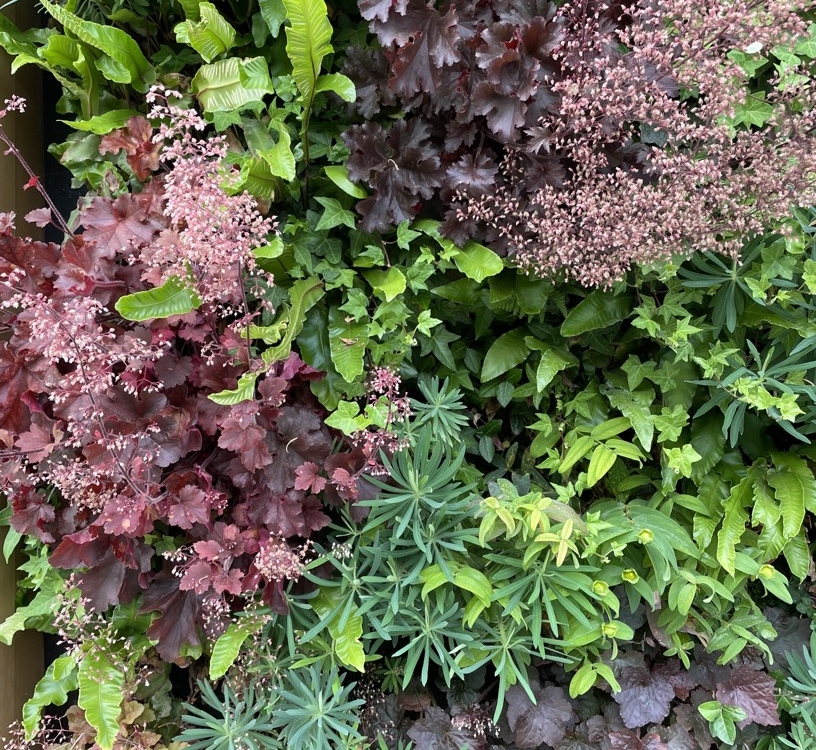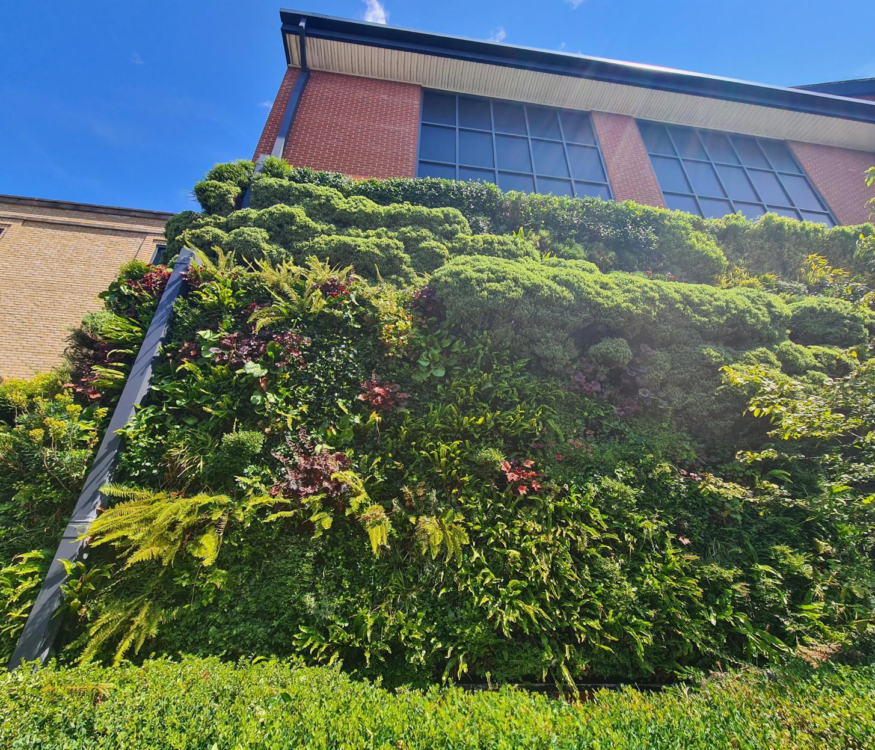The 6-12 July is Net Zero Week, a virtual conference and awareness week bringing together policy makers, business owners, and professionals.
As the built environment industry intensifies its efforts to create Net Zero Carbon buildings, we mustn’t forget the vital role nature has in tackling the climate crisis and making liveable cities for the future. Urban greenery such as trees, parks, green roofs and living walls, help keep cities cool, support our ecosystem and create pleasant places to enjoy.
Biotecture are on a mission to transform urban environments and have been installing living walls for almost 20 years. Here are some of the benefits:
Building Bio-Membranes
Green infrastructure such as living walls can help mitigate the effects of rising temperatures and reduce our reliance on mechanical heating and cooling. Studies show that by putting plants on buildings we can decrease their winter heating costs by up to 8% and reduce air conditioning costs in summer by over 50%. Studies also show that green walls can reduce air temperature around them by up to 4°C.
The urban heat island effect is a growing concern for policy makers. We’ve all experienced it when visiting a city on a hot summer’s day and can feel the heat emitted from the pavement and building facades.
Climate change will exacerbate this problem, with studies by the Swiss Federal Institute of Technology predicting that London will have a climate similar to Barcelona by 2050. Plants within living walls provide natural shade and absorb heat, which can be seen from this thermal image in London. The building on the right has our living wall (cooler), whereas the building on the left shows elevated façade temperatures.

Living wall at Synergy House, Southampton Row, thermal imagery showing the living wall is cooler than the neibouring facade.
Air pollution reduction
In major cities the width between buildings is often less than the height of buildings creating ‘urban street canyons’. In this space air becomes endlessly trapped, circulating contaminants such as sulphur dioxide, nitrogen dioxide and particulate matters until something takes it out of circulation, hopefully not our lungs! Living walls can help reduce air pollution by catching particulate matter, absorbing gases and releasing oxygen.

Effectiveness of Green Infrastructure for Improvement of Air Quality in Urban Street Canyons – Pugh, MacKenzie, Whyatt and Hewitt, Environmental Science & Technology, 2012
Biodiversity Net Gain
Biodiversity is vital to maintaining healthy ecosystems, and healthy ecosystems are vital to tackling climate change and maintaining our food chain. You would typically find about four species of spider on 100sqm of blank wall, compared to 19 species on 100sqm of living wall. Developers are now required to increase biodiversity on sites by 10 per cent. Living walls are a space efficient way to achieve this. The Biotecture team are horticultural experts, and we can select plants to encourage biodiversity or even target individual inspect species. We can also incorporate habitat boxes into our living walls.





